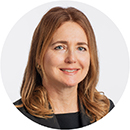![Brandes Partners Logo White on Green Box [240x93] Brandes Partners Logo White on Green Box](/images/default-source/resources/brandes-partners-logo-white-on-green-box-240x93.jpg?sfvrsn=fa551eab_6)
![Brandes Partners Logo White on Green Box [240x93] Brandes Partners Logo White on Green Box](/images/default-source/resources/brandes-partners-logo-white-on-green-box-240x93.jpg?sfvrsn=fa551eab_6)
The Fund seeks long-term capital appreciation by investing in equity securities of non-U.S. issuers that the Fund’s investment team believes are undervalued relative to their financial strength and upside potential.


Jeff Germain is a Director, Investments Group and Team Leader and Senior Analyst on the Basic Materials and Utilities Research Teams. He is a member of the International Large-Cap Investment Committee and a limited partner of the firm’s parent company. Before joining Brandes, Mr. Germain was a Financial Analyst with Harcourt and the chief financial officer of Golf Destinations. He earned his BS in business administration with a concentration in finance from the University of North Carolina at Chapel Hill. Mr. Germain’s relevant experience began in 2001 when he joined Brandes Investment Partners.

Amelia Morris is a Director, Investments Group. She oversees and directs equity research activities in the consumer sector. Additionally, Ms. Morris covers the European retail and telecommunications services industries and is a member of the International Large-Cap Investment Committee. Previously, Ms. Morris was a member of the Emerging Markets Investment Committee, the firm’s Investment Oversight Committee and the Brandes Institute Advisory Board. She is a limited partner of the firm’s parent company.
Ms. Morris earned her AB in economics (Phi Beta Kappa and cum laude) from the University of California, Davis and her MBA from the University of Chicago Booth School of Business. Her relevant experience began in 1986 and she joined Brandes Investment Partners in 1998.

Shingo Omura is a Director, Investments Group and is a Senior Analyst and leader of the Health Care Research Team, with a primary emphasis on pharmaceutical companies. Additionally, he is a member of the International Large-Cap Investment Committee, the primary Product Coordinator for the Japan Equity strategy and a member of the Corporate Governance and Proxy Voting Committee. Mr. Omura is a limited partner of the firm’s parent company.
Before joining the firm, he was a sell-side Research Analyst in Japan, where he covered basic materials and utilities companies. Mr. Omura earned his BA in economics from Keio University in Tokyo, Japan and his MBA from the Haas School of Business at the University of California, Berkeley. His relevant experience began in 2001 and he joined Brandes Investment Partners in 2005.

Luiz Sauerbronn is a Director, Investments Group, a Senior Analyst on the Industrials Research Team and a member of the International Large-Cap and Small-Cap Investment Committees. Additionally, he is a member of the Corporate Governance and Proxy Voting Committee and a limited partner of the firm’s parent company.
Before joining the firm, Mr. Sauerbronn was a Summer Associate with J.P. Morgan and Manager of the Mergers and Acquisitions Advisory Team of Brazil-based Banco Brascan (part of Brookfield Asset Management). He also worked with Royal Dutch Shell. Mr. Sauerbronn earned his BS in economics from the Federal University of Rio de Janeiro and his MBA from the Haas School of Business at the University of California, Berkeley. His relevant experience began in 1995 and he joined Brandes Investment Partners in 2001.

Brent Woods is a limited partner of the firm’s parent company. He is a member of the International Large-Cap Investment Committee, a member of the Investment Oversight Committee, which monitors the processes and activities of the firm’s investment committees, and an officer of the firm’s general partner. Mr. Woods is also a member of the ESG Steering Committee, which is responsible for guiding the firm’s long-term ESG strategy and initiatives. Previously, he was the firm’s Chief Executive Officer and prior to that he was a Managing Director, Investments Group, responsible for Brandes’ securities research efforts and oversight of the product investment committees. He earned his AB (Phi Beta Kappa) from Princeton University, his master in international studies from St. John’s College at Cambridge University, England, and his JD (cum laude) from Harvard Law School. His relevant experience began in 1995 when he joined Brandes Investment Partners.
| Expenses | Class A |
|---|---|
| Total Annual Fund Operating Expenses †
Expenses that you pay each year as a percentage of the value of your investment.
|
1.12% |
| Less: Fee Waiver and/or Expense Reimbursement | 0.00% |
| Net Expense Ratio | 1.12% |
Data displayed as of Mar 31, 2025
| Characteristic | Brandes International Equity Fund | MSCI EAFE Index |
|---|---|---|
|
Price/Book (x)
Price per share divided by book value per share.
|
1.2 | 1.9 |
|
Price/Earnings (x)
Price per share divided by earnings per share.
|
14.4 | 15.3 |
|
Price/Cash Flow (x)
Price per share divided by cash flow per share.
|
6.3 | 9.7 |
|
Dividend Yield %
Calculated by annualizing the last quarterly dividend paid and dividing it by the current share price. The dividend yield is that of the securities held in the portfolio; it is not reflective of the yield distributed to shareholders.
|
4.0 | 3.0 |
|
SEC 30 Day Yield (subsidized) %
As of 3/31/2025 | SEC 30-Day Yield This calculation is based on a 30-day period ending on the last day of the month shown. It is computed by dividing the net investment income per share earned during the period by the maximum offering price per share on the last day of the period. The yield figure reflects the dividends and interest earned during the period, after the deduction of the fund’s expenses. A subsidized yield takes into consideration the expenses paid by the advisor.
|
2.19 | -- |
|
SEC 30 Day Yield (unsubsidized) %
As of 3/31/2025 | SEC 30-Day Yield This calculation is based on a 30-day period ending on the last day of the month shown. It is computed by dividing the net investment income per share earned during the period by the maximum offering price per share on the last day of the period. The yield figure reflects the dividends and interest earned during the period, after the deduction of the fund’s expenses. A subsidized yield takes into consideration the expenses paid by the advisor.
|
2.19 | -- |
|
Active Share %
A measure of the percentage of stock holdings in a manager’s portfolio that differs from the benchmark index.
|
87.5 | -- |
| Number of Holdings | 69 | -- |
|
Weighted Average Mkt. Cap ($bil)
The average market capitalization of a fund's equity portfolio gives investors a measure of the size of the companies in which the fund invests. Market capitalization is calculated by multiplying the number of a company's shares outstanding by its price per share.
|
66.0 | 89.7 |
|
Portfolio Turnover (TTM) %
(Trailing Twelve Months)
|
34.7 | -- |
| Company | % | Country | Industry |
|---|---|---|---|
| Takeda Pharmaceutical Co Ltd | 3.0 | Japan | Pharmaceuticals |
| Heineken Holding NV | 2.6 | Netherlands | Beverages |
| Sanofi SA | 2.6 | France | Pharmaceuticals |
| GSK PLC | 2.5 | United Kingdom | Pharmaceuticals |
| Alibaba Group Holding Ltd | 2.5 | China | Broadline Retail |
| Samsung Electronics Co Ltd | 2.2 | South Korea | Technology Hardware, Storage & Peripherals |
| Swatch Group AG | 2.1 | Switzerland | Textiles, Apparel & Luxury Goods |
| Carrefour SA | 2.1 | France | Consumer Staples Distribution & Retail |
| BNP Paribas SA | 2.0 | France | Banks |
| Henkel AG & Co KGaA | 2.0 | Germany | Household Products |
| % of Fund | 23.6 | ||
| Portfolio holdings are subject to change at any time at the discretion of the investment manager. | |||
| Market Classification | Brandes International Equity Fund | MSCI EAFE Index |
|---|---|---|
| Developed Markets | 75.0 | 100.0 |
| Emerging Markets | 21.1 | - |
| Type |
Record Date
Date on which a shareholder must officially own shares in order to be entitled to a dividend. After the date of record, the stock is said to be ex-dividend.
|
Ex-Date
Date on which a fund begins trading without the benefit of the dividend. Typically, a fund's price moves up by the dollar amount of the dividend as the ex-dividend date approaches, then falls by the amount of the dividend after that date.
|
Payable Date
Date on which a declared fund dividend or a bond interest payment is scheduled to be paid.
|
Amount |
|---|---|---|---|---|
| Income Dividend | Dec 30, 2024 | Dec 31, 2024 | Dec 31, 2024 | $0.219691 |
| Annual Fund Operating Expenses | Class A |
|---|---|
| Net Expense Ratio | 1.12% |
| Annual Management | 0.75% |
| Other Expenses | 0.12% |
| Service 12b-1 | 0.25% |
| Shareholder Servicing | None |
| Expenses that you pay each year as a percentage of the value of your investment. | |
| Shareholder Fees | Class A |
|---|---|
| Maximum Sales Charge (Load) Imposed on Purchases (as a percentage of offering price) | 5.75%* |
| Maximum Deferred Sales Charge (Load) | None** |
| Fees paid directly from your investment. | |
| *Please click here for sales load break points. | |
| **Investments of $1 million or more are not subject to a front-end sales charge but generally will be subject to a deferred sales charge of 1.00% on amounts of less than $4 million, 0.50% on amounts of at least $4 million but less than $10 million and 0.25% on amounts of at least $10 million, if redeemed within one year from the date of purchase. | |